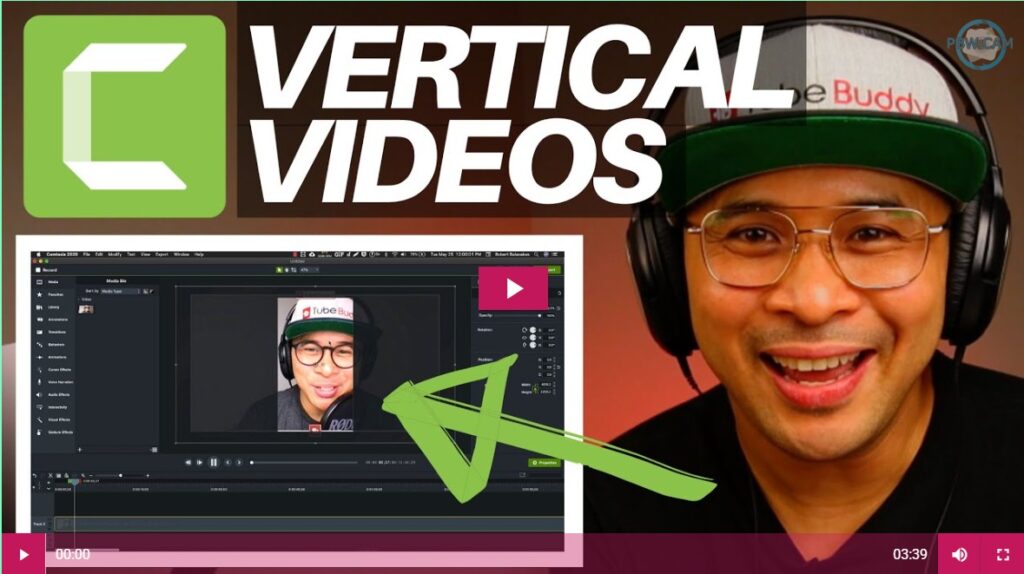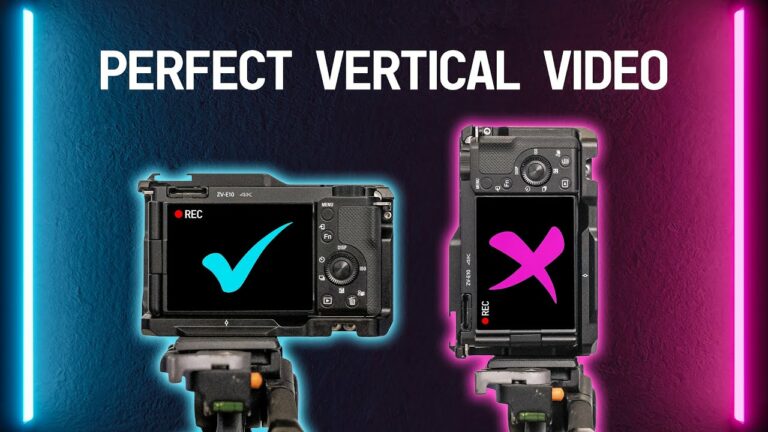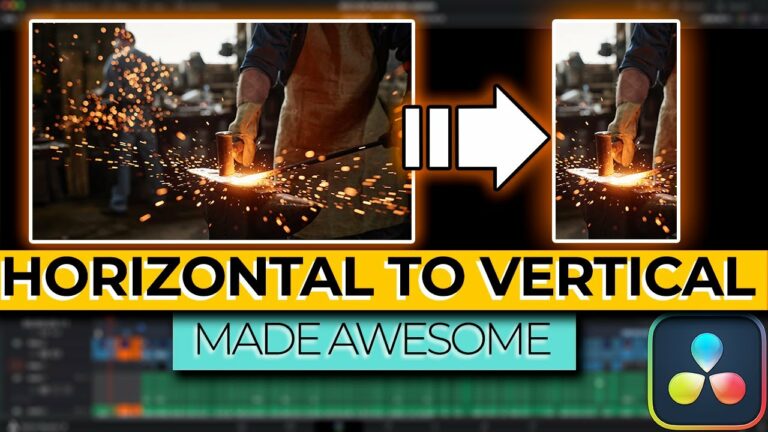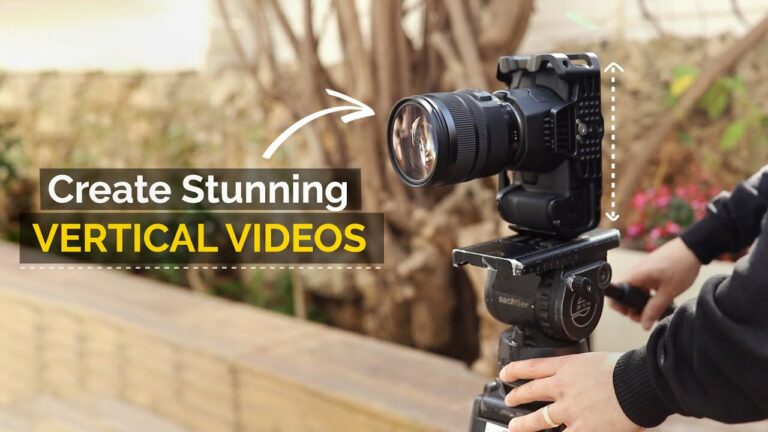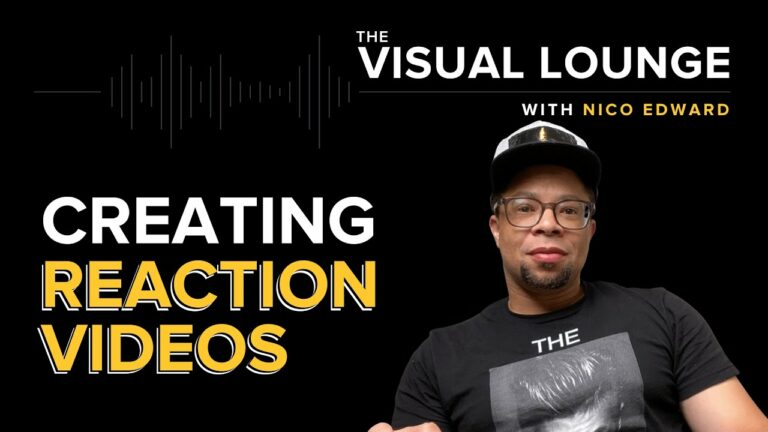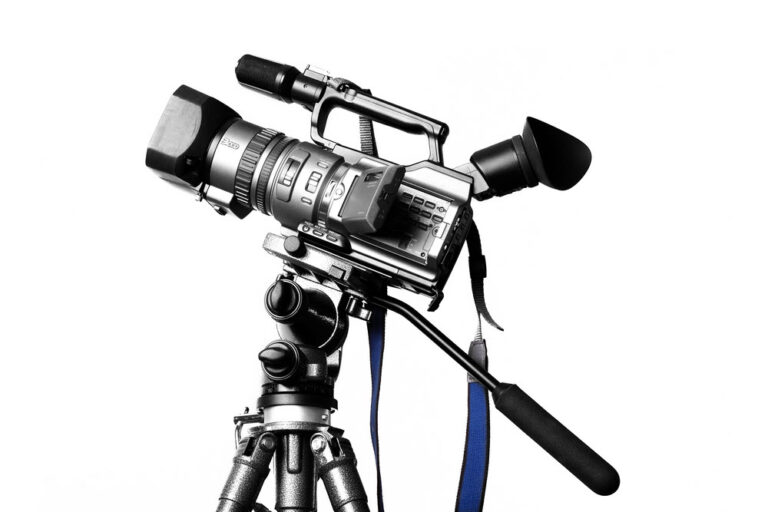Fix Founders Mistakes with Vertical Videos
There’s no doubt that video is a powerful medium.
When used correctly, it can engage and inform your audience in a way that no other medium can.
However, there’s a right way and a wrong way to use video.
One of the biggest mistakes that businesses make is using horizontal video when they should be using vertical video.
This article will address how to Fix Founders Mistakes with Vertical Videos.
Vertical video is becoming increasingly popular, especially on mobile devices, but many businesses are still using horizontal video because they don’t know any better.
If you’re using horizontal video on your website or social media, you’re making a big mistake. Here’s why you should be using vertical video instead.
In the rapidly evolving landscape of digital content creation, the rise of vertical video has transformed how brands engage with their audiences.
As mobile devices dominate media consumption, founders and content creators must adapt their strategies to harness the full potential of this format.
However, many founders encounter pitfalls in the initial stages of vertical video production, often leading to disengaged viewers and missed opportunities.
This article, “Fix Founders Mistakes with Vertical Videos using Camtasia,” aims to address common missteps that entrepreneurs make when venturing into vertical video content.
By leveraging the powerful editing capabilities of Camtasia, creators can refine their approach, enhance their visual storytelling, and ultimately produce compelling videos that resonate with their target demographic.
From improper framing and poor audio quality to ineffective branding and inconsistent messaging, understanding these foundational errors is crucial for success.
This piece will provide actionable insights and practical tips to rectify these mistakes, ensuring that founders can create polished, professional vertical videos that not only attract attention but also foster deeper connections with their audience.
Join us as we explore the essential strategies to elevate your vertical video content and drive meaningful engagement in a crowded digital marketplace.
Table of Contents Fix Founders Mistakes with Vertical Videos
Understand common founder mistakes thoroughly
Recognizing the frequent pitfalls encountered by founders is crucial for the sustainability and growth of a startup.
Many founders fall into the trap of overlooking market research and customer feedback, resulting in products or services that do not resonate with their target audience.
Additionally, inadequate financial planning often leads to cash flow problems, which can jeopardize the viability of the business.
Founders may also struggle with delegation, attempting to manage every aspect of their venture, which can stifle productivity and innovation.
Understanding these common mistakes allows founders to proactively address challenges and implement strategies that foster resilience and adaptability in an ever-changing business landscape.
Moreover, effective communication is frequently neglected, both within teams and with external stakeholders.
Founders must cultivate transparency and clarity in their messaging to align their teams and engage potential investors.
Building a strong company culture is another critical aspect that is sometimes underestimated; a cohesive team can drive success, while a fractured one can lead to high turnover rates and decreased morale.
By thoroughly examining these areas, founders can enhance their decision-making processes and create a robust framework that supports long-term success.
Leverage vertical videos for effective communication
Utilizing vertical videos can significantly enhance communication efforts, particularly in today’s mobile-first world where users engage with content primarily on smartphones.
This format allows for more dynamic storytelling and can capture attention more effectively than traditional horizontal videos.
By embracing vertical video, founders can convey their brand’s mission, share product updates, or illustrate team culture in a format that feels relatable and accessible to their audience.
This approach not only fosters a deeper connection with viewers but also encourages higher engagement rates, as vertical videos often align better with how people consume content on social media platforms.
Furthermore, vertical videos can facilitate clear and concise communication by allowing founders to present information in a visually engaging manner.
This can be particularly beneficial for explaining complex concepts or processes, as the combination of visuals and sound can enhance understanding and retention.
By incorporating vertical video into their communication strategy, founders can create impactful messages that resonate with their target audience, ultimately supporting the overall success of their ventures.
Utilize Camtasia for easy editing
Camtasia offers a powerful and user-friendly platform for editing vertical videos, making it easier for founders to refine their content without requiring extensive technical skills.
With its intuitive interface, users can seamlessly trim clips, add annotations, and incorporate transitions that enhance the storytelling aspect of their videos.
The ability to preview edits in real-time allows founders to make informed decisions about pacing and visual flow, ensuring that the final product is both polished and effective in conveying their message.
Additionally, Camtasia’s built-in library of assets, including music tracks and sound effects, provides users with the tools needed to elevate their vertical videos without the hassle of sourcing external materials.
By streamlining the editing process and offering robust features such as screen recording and interactive elements, Camtasia empowers founders to produce high-quality content that resonates with their audience while saving time and effort in the editing phase.
This efficiency can be crucial in today’s fast-paced digital landscape, where timely and engaging content is essential for maintaining audience interest.
Optimize content for mobile viewers
In today’s digital landscape, ensuring that content is tailored for mobile viewers is crucial for maximizing engagement and reach.
With a significant portion of the audience consuming video on smartphones, it is essential to utilize vertical formats that align with users’ natural scrolling behavior.
This approach not only captures attention more effectively but also enhances the viewing experience, as mobile screens are better suited for taller video dimensions.
Strategic use of visuals, concise messaging, and clear calls to action can significantly improve retention rates and drive interaction.
Furthermore, incorporating responsive design principles can contribute to a seamless viewing experience, regardless of the device being used.
This includes optimizing videos for quick loading times and ensuring that text and graphics remain legible on smaller screens.
By leveraging these strategies, founders can create impactful video content that not only looks great but also performs well on mobile platforms, ultimately fostering a deeper connection with their audience.
Track engagement to improve future videos
Analyzing viewer engagement metrics is essential for refining video content and enhancing future productions.
Key performance indicators such as watch time, audience retention, and interaction rates provide valuable insights into what resonates with the audience.
By systematically reviewing these metrics, creators can identify patterns in viewer behavior, such as segments where drop-offs occur, and adjust their storytelling techniques or pacing accordingly.
Moreover, understanding demographic data allows for tailored content that speaks directly to the target audience’s preferences and expectations, ultimately leading to greater engagement.
Utilizing feedback mechanisms, such as surveys or comment analysis, further enriches the understanding of audience sentiment and content effectiveness.
By actively engaging with viewers and soliciting their opinions, creators can foster a sense of community while gaining direct insights into what their audience values.
This iterative approach not only aids in honing the content strategy but also builds a long-term relationship with viewers, paving the way for sustained growth and increased loyalty to the brand.
In conclusion, addressing common founder mistakes through the effective use of vertical videos can significantly enhance communication and engagement within your organization.
By leveraging Camtasia’s intuitive features, founders can create polished, professional content that not only conveys their vision but also resonates with their audience.
As the demand for mobile-friendly formats continues to grow, adopting vertical videos is not just a trend but a strategic move that can elevate your brand’s presence.
By investing time and resources into mastering this medium, founders can more effectively connect with their stakeholders, ultimately driving success and fostering a culture of innovation.
Identify the most common mistakes in vertical videos
There are a few common mistakes that people make when shooting vertical videos. The first is not framing the shot correctly.
When you’re shooting vertically, you need to make sure that you frame the shot so that the subject is in the center of the frame.
Otherwise, it will look like you’re shooting from an off-angle, and the video will look crooked.
The second mistake is not stabilizing the camera.
When you’re shooting vertical video, it’s important to use some sort of stabilization, whether it’s a tripod or a gimbal. Otherwise, the video will look shaky and unprofessional.
The third mistake is not paying attention to the background.
When you’re shooting vertical video, it’s easy for the background to become cluttered and distracting.
Make sure to choose a simple background that won’t take away from the subject of the video.
By avoiding these common mistakes, you can make sure that your vertical videos look professional and polished.
Consider the viewer’s experience
While it’s great to be aware of the different ways people consume content, it’s even more important to consider the viewer’s experience.
After all, you want people to actually watch your video, not just scroll past it.
Think about how you can make your video more engaging and easy to watch. For example, if you’re filming a tutorial, break it down into small, digestible steps.
If you’re filming an interview, make sure the questions are interesting and relevant to your audience.
Most importantly, don’t make your video too long. People have short attention spans, so try to keep your videos under 5 minutes.
If you absolutely need to go longer, make sure you break up the video into smaller parts so people can watch it in chunks.
Be aware of the video size
If you’re creating vertical videos for social media, be aware of the size restrictions for each platform.
For example, Instagram Stories can be up to 10 seconds long, while Facebook Stories can be up to 20 seconds long.
Make sure your videos are the appropriate length for each platform, or you risk losing viewers before your video is even over.
Use the right color palette
If you’re creating vertical videos, it’s important to use the right color palette.
This will ensure that your videos look great on all devices, regardless of screen size or resolution.
There are a few things to keep in mind when choosing a color palette for your vertical videos.
First, you want to make sure that the colors you use are complementary.
You don’t want to use colors that will clash or make your video difficult to watch.
Second, you want to use a limited color palette. This will help to keep your video looking clean and polished.
Too many colors can be overwhelming and make your video look cluttered.
Finally, you want to make sure that your color palette is appropriate for the type of video you’re creating.
If you’re creating a video for a brand or company, you’ll want to use colors that match their branding.
If you’re creating a personal video, you can use any colors you like!
Keep these tips in mind and you’ll be sure to create vertical videos that look great on all devices.
Add subtitles and captions
If your videos are vertical, make sure to add subtitles and captions. This will ensure that your audience can still follow along even if they can’t turn their head or if they’re in a noisy environment.
Include a call to action
Most people who watch vertical videos have their phones in their hands. And when people have their phones in their hands, they’re usually holding them upright. That’s why vertical videos are so popular on social media platforms like Snapchat and Instagram Stories.
But just because vertical videos are popular doesn’t mean they’re the best format for all videos. In fact, for many videos, vertical just doesn’t make sense.
If you’re a founder who’s thinking about using vertical video for your pitch deck or for other marketing materials, stop and think again. Unless your video is specifically designed for people to watch on their phones, chances are it would be better in a horizontal format.
Here are three reasons to avoid vertical videos:
- They’re harder to watch
- They’re less engaging
- They’re less likely to be shared
If you’re set on using vertical video, make sure you include a call to action that tells viewers how to best view your video. For example, you could include text that says “For best results, view this video in landscape mode.”
Seek feedback from viewers
If you’re going to make vertical videos, you need to be aware of the potential mistakes you could be making. One of the biggest mistakes is not seeking feedback from your viewers.
It’s important to get feedback early and often when you’re creating vertical videos. This will help you course correct and make sure you’re not making any major mistakes.
There are a few different ways you can get feedback from your viewers.
You can post your videos on social media and ask for people’s thoughts. You can also reach out to specific people who you think would be interested in your video and ask them for feedback.
Whatever method you choose, make sure you’re getting feedback from your viewers. Otherwise, you could be making vertical videos that no one actually wants to watch.
Make sure the video is easy to share
One of the most common mistakes we see founders make when shooting vertical videos is not making them easy to share.
Most people watch videos on their phone, and when they try to share a video that’s not optimized for mobile, it can be a frustrating experience.
When you’re shooting vertical videos, make sure they’re easy to share by including share buttons and links that are optimized for mobile.
You can also include a call-to-action at the end of the video that encourages people to share it.
In conclusion, if you’re shooting vertical video, there are a few things you can do to make sure your video looks its best.
First, make sure the important action is happening in the middle of the frame.
Second, use close-ups and close-ups to make sure your viewers can see the details.
Finally, use vertical video editing software to fix any perspective problems. With these tips, you can make sure your vertical videos are just as good as your horizontal ones.



